CHRIS STARR, DIRECTOR OF MARKETING AND COMMUNITY OUTREACH: Sometimes it seems that much of what we historically associate with primary school education is on the wane. The majority of U.S. States have now adopted the Common Core standards for education, and its curricular dictates are driving many school districts to scale-down or abandon traditional subjects. Music, fine and industrial arts, and cursive handwriting classes are being abandoned. In some parts of the country, schools are also abolishing recess.
Sometimes it seems that much of what we historically associate with primary school education is on the wane.
Quite to the contrary, new brain science is illuminating the direct cognitive benefits of these jettisoned pastimes. Scientists and researchers are offering strong evidence to support the power of play, and the brain-activating effects of disciplines that require fine motor control—such as practicing cursive.
At The Peck School, cursive is a strong component of the elementary school curriculum. The art of cursive is intentionally taught in Kindergarten to Grade 2, and students receive a formal assessment of their skills. In every grade thereafter, handwriting is certainly not forgotten amidst the iPads, tablets, and computers. “Writing helps train the brain to integrate visual and tactile information and develop motor dexterity,” explains Nina Sharma, Head of Lower School. She goes on to say, “There are vital hand and brain connections which allow new pathways for learning to open up in your brain. You need your hands to explore.”
Peck’s commitment to supporting cursive will continue—despite the sadly diminishing stock of the blue cursive tablets our alumni may remember! (Note: Last summer, W.G. Fry, a supplier of the pads for over 30 years, said that they would no longer be available. After a futile search with a variety of vendors, we are now ‘reduced’ to loose leaf paper to continue the instruction!)
There is an argument against teaching cursive in schools, based primarily on what is termed “common sense logic.” “The heart of the argument is simply that with the ubiquity of digital communications, cursive is ‘old’ technology that students no longer need when it comes to being college and career-ready,” claims a report by the National Association of State Boards of Education entitled The Handwriting Debate.
Certainly, no one can deny that digital communications are ubiquitous and that students need preparation for their 21st century lives. For this very reason, The Peck School has been at the forefront of information literacy programs. Our 1:1 laptops in the Upper School, 1:1 iPads in the Lower School, robotics clubs, coding initiatives, and other avenues to promote good digital citizenship ensure our students are well prepared for secondary school, college, and career.
But a crucial consideration, especially in this case, that shouldn’t be set aside is brain development itself. Consider the following six competencies that both handwriting advocates and medical researchers proclaim are improved through the practice of cursive.
- Cognitive and Motor Skills DevelopmentHandwriting is considered a complex motor skill, and good instruction in cursive not only activates areas of the brain that keyboarding can’t, it also strengthens young hands and improves finer muscle skills.
- Literacy DevelopmentA study by Saperstein and Associates entitled “Handwriting in the 21st Century?” found that students without consistent exposure to handwriting have more problems with spelling, written and oral comprehension, and contextual interpretation of words and phrases.
- Brain DevelopmentThe inter-connected process of writing in cursive lights areas of the brain associated with thought process, memory, and verbal skills. A study at the University of Washington found that practicing cursive, in particular, improved self-regulation and mental organization.
- MemoryStudies have also provided strong evidence that handwriting improves retention of information. Students who take notes by hand versus the keyboard are more likely to process the information effectively and remember it better. One study by Stephen Peverly, Department Chair and Professor of Psychology and Education at Columbia University Teachers College, found that “handwriters exhibited better comprehension of content and were more attentive during class discussions.”
- Written expressionVanderbilt University professor Steve Graham conducted an experiment on a group of first graders in Prince George’s County over a decade ago. He increased the level of handwriting instruction they were given and after nine weeks discovered the students not only wrote faster, but they wrote longer essays and expressed more ideas.
- Learning DisabilitiesHandwriting instruction has proven to be extremely valuable to students with disabilities. In particular, the practice of cursive has been shown to help students with dyslexia improve their reading and writing skills.
Beyond brain science and recent research, there is a case to be made that handwritten communication is simply more beautiful, individual and intimate. Handwritten documents from the ancient times connect us more directly to their authors. The Declaration of Independence has a passion and sincerity precisely because of its carefully penned words and flourishes.
Handwriting can also be personally authenticated in a way digital communication cannot. And don’t we somehow feel a deeper connection to the poet, composer and musician, when we see their stanzas, notes and lyrics drawn in their very own hand?
At The Peck School, we will continue to emphasize cursive instruction and encourage handwritten communication in conjunction with typing and computer skills. Strangely enough, who could have imagined a day when a school might be considered “progressive” for including penmanship in its curriculum?





